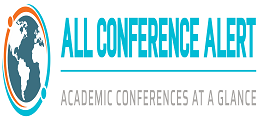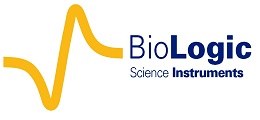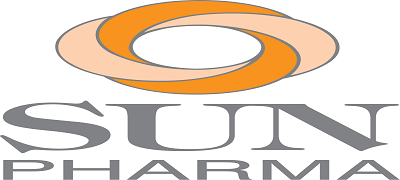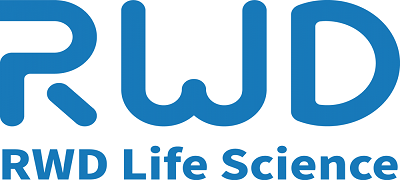About Conference & Past Conference Report
Join Us at the 2nd International Conference on Adolescent Medicine and Child Psychology
Dates: May 17,18 2025
Location: Barcelona, Spain
Dear Doctors, Healthcare Professionals, Researchers, and Students
Researchers Fusion are excited to extend a warm invitation to you for the 2nd International Conference on Adolescent Medicine and Child Psychology, taking place as an interactive Conference at Barcelona, Spain, USA. This congress promises to be a dynamic platform for sharing cutting-edge research, exploring innovative therapies, and discussing the latest trends in combating Child Psychology. Adolescent Medicine focuses on the physical, emotional, and social health of individuals aged 10-19. It addresses puberty, sexual health, mental health, substance abuse, and preventive care, ensuring comprehensive health support during this critical developmental stage. This specialty aims to promote healthy lifestyles and manage health issues unique to adolescents. Child Psychology studies the mental, emotional, and behavioural development of children from birth through adolescence. It explores how children think, learn, and interact with
others, aiming to understand and support their cognitive and emotional growth. This field helps diagnose and treat developmental disorders and promotes healthy development.
Why to Attend?
Expert Speakers: Hear from leading experts in the field who will share their insights and discoveries.
Networking Opportunities: Connect with peers, colleagues, and mentors from around the globe.
Educational Sessions: Gain knowledge from comprehensive sessions covering various aspects of infectious diseases.
Research Presentations: Showcase your research findings and contribute to the advancement of knowledge.
Virtual Exhibition: Explore the latest advancements in diagnostics, treatments, and technologies.
Who Should Attend?
Doctors and Healthcare Practitioners
Researchers and Scientists
Students and Academicians
Public Health Officials
Past Conference Report:
🌍 International Conference on Adolescent Medicine and Child Psychology 2024 – Event Report
📅 May 15–16, 2024 | 📍 Palladiun Palace Hotel
Event Website
Overview
The International Conference on Adolescent Medicine and Child Psychology 2024, held from May 15–16, 2024, in Rome, Italy, was a landmark hybrid event that united a diverse community of researchers, clinicians, professors, and policymakers from around the globe. Centered on the theme “Emerging Trends in Child and Adolescent Psychological Disorders”, the conference offered a dynamic platform for knowledge exchange, cross-disciplinary collaboration, and innovative dialogue around the latest advancements in child and adolescent mental health.
Opening Ceremony
The conference commenced with a warm welcome from the Chair of the Organizing Committee, who underscored the relevance of advanced technologies in addressing mental health challenges in young populations. The Keynote Speakers, distinguished figures in pediatric psychology and psychiatry, delivered compelling talks highlighting the evolving landscape of psychological disorders and the role of digital innovation in improving diagnostic and therapeutic strategies.
Scientific Sessions & Workshops
A wide array of scientific sessions and interactive workshops provided in-depth insights into specialized areas of adolescent medicine and psychology. These sessions facilitated constructive dialogue and skill-building among attendees.
Key Conference Sessions Included:
Child Psychology
Adolescent Health
Educational Psychology
Early Childhood Psychology
ADHD Disorder
Adolescent Psychology
Neonatal Psychology
Positive Psychology
Developmental Psychology
Cognitive Development
Each session was led by field experts and included real-world case studies, latest research findings, and emerging therapeutic approaches.
Poster Presentations
Over 50 posters were presented during the dedicated poster sessions. These showcased groundbreaking research from young scientists and early-career professionals. The interactive format encouraged vibrant discussions, exchange of research ideas, and valuable networking among participants from various institutions and countries.
Awards & Recognitions
Child Psychology 2024 honored excellence with a series of awards, acknowledging outstanding contributions to the field:
🏅 Best Poster Presentation Award
🎓 Young Researcher Award
These accolades recognized innovation, scientific merit, and the potential for impactful research in child and adolescent psychology.
Closing Ceremony
The conference concluded on a high note with a recap of key learnings, a forward-looking discussion on future trends in pediatric mental health, and an invitation for sustained global collaboration. Organizers expressed heartfelt appreciation to all speakers, participants, and sponsors for making the event a resounding success.
Looking Ahead
The success of Child Psychology 2024 has set the stage for an even more impactful gathering next year. The organizing committee is committed to expanding the reach, diversifying the topics, and fostering greater innovation in future editions.
Stay updated for the next edition at
researchersfusion.com/conferences/adolescent-medicine-and-child-psychology
Day 1: May 15, 2024
Wagih El Masri
Keele University, England
Neurological recovery following Traumatic Spinal Cord Injuries (TSCI)
Time: 09:10-09:55
Biography:
Wagih El Masri is an accredited Surgeon in the field of Traumatic Spinal Injuries (TSI).He trained at Stoke Mandeville, Oxford, Guys Hospitals & the USA between 1971&1982. Appointed Director of the MCI Centre in the RJAH Orthopaedic Hospital Oswestry (44 beds) between 1983 & 2014. He treated 10,000 patients with cord damage and took full responsibility of 3000 patients from the first few hours/days of injury to end of life. Published 148 manuscripts, lectured worldwide. Past President of ISCoS - Received National & International Awards from a range of Institutions including the House of Lords in the UK.
Abstract:
Traumatic spinal cord injuries (TSCI) are life-changing events. The medical, physical, psychological, social, financial, vocational, environmental & matrimonial effects also have an impact on the quality of life of the patient. The combination of consequent generalized physiological impairment, multi-system malfunctions, multiple disabilities, wide range of potential complications, sensory impairment together with the non-medical effects impose challenges to patients, carers and clinicians. Early prediction of neurological recovery is important to patients and family members especially during the early stages following injury. Neurological recovery is not uncommon following traumatic spinal cord damage and is predictable. With good simultaneous active physiological conservative management of the injured spine and the multisystem malfunctions all complications that can further damage the Physiologically Unstable Injured Cord (PUSC) can be prevented. Provided both the biomechanical instability and physiological instability of the injured cord are well contained to protect the cord from further mechanical and non-mechanical damage most patients will exhibit a degree of neurological recovery. The magnitude and extent of this recovery depends on the presence or absence of sensory and sensory-motor long tract sparing in the first 48 hours of injury irrespective of the radiological presentation on X-rays, CT or MRI. To date there is no evidence that surgical or non-surgical interventions on the injured spine and or spinal cord add value to the neurological or other outcomes of patients with TSCI. The risks of further damage to the PUSC by a number of pathological mechanisms during surgery, post operatively as well as by non-operative management of the injured spine without adequate attention to all the malfunctioning systems of the body during the transition between the stage of spinal & neurogenic shock to return of reflexes can result in neurological deterioration, lack of expected degree of recovery or delays in recovery The positive and negative prognostic indicators of neurological recovery, and the factors that enhance, prevent or cause neurological deterioration in patients with complete and incomplete cord damage will be discussed.
AV Srinivasan
AVS Clinic, India
Keynote: Cerebello cognitive and affective syndrome-recent perspectives
Biography:
Avathvadi Venkatesan Srinivasan, driven by his quest for excellence, joined Madras Medical College (MMC) and received MD (General Medicine) in 1978. Later, he pursued and received DM in Neurology from his alma mater. His thirst for research, skills and the latest development in Neurology made him find his way to the National Institute of Neurology and Neurosurgery, his pioneering research work on Neuroleptic Malignant Syndrome got him bestowed with the PhD degree in 2002. It made him the first ever recipient in Neurology from the Tamil Nadu Dr. M.G.R. Medical University, since its inception in 1988. His path breaking research (6 papers) in Phantom limbs, Stroke etc., with Padma Bhusan Dr. V S Ramachandran, Director, Center of Brain and Cognition, University of San Diego remain acclamatory to his undisputed authority in Behavioral Neurology and Movement disorders. He authored more than 100 scientific c papers; dozens of his other work have found places in reputed medical journals and has published 12 chapters. His research papers presented, won acclaims in 60 National conferences and in 25 International conferences held in UK, USA, Japan, Australia, China, Europe and other countries. He is the only one from India to collaborate with Dr V S Ramachandran, who is the first recipient of Padma Bhusan for his contribution to Neurosciences.
Abstract:
Cerebello cognitive affective syndrome (CCAS; Schmahmann’s Syndrome) is characterized by deficits in executive function, linguistic processing, spatial cognition and affect regulation. The causes of CCAS include cerebellar agenisis, dysplasia and hypoplasia, cerebellar stroke, tumour, cerebellitis, trauma, PSP, Multiple System Atrophy. This is also seen in children with prenatal early postnatal or developmental diseases. Clinical Impairment is seen in planning, set shifting, abstract reasoning, verbal fluency and working memory with distractibility and inattention. CCAS challenges the traditional view of cerebellum being predominantly motor functions and focusses on the non-motor function also. This is because of its connection to cerebral cortex and limbic system. One case of CCAS is discussed with video segments. Case 1: An engineering graduate student met with an accident and was unconscious for hours. He had loss of spatial cognition with perseveration, destructivity and inattention. He had spatial disorganization with Visio-spatial memory affected. He had blunting of affect and inappropriate behavior. He slowly recovered and still has cognitive dysfunction and cerebellar science. He developed depression and needed psychiatric help. In conclusion, an unified paradigm for cognitive science with simplified Neurodynamics and different levels of modelling or important. Recurrent neural network, reservoir computing => psychological spaces. The open questions include in this are 1. High dimensional P-spaces with finsler geometry needed for visualization of the mind events. At the end of the road, the physics – Like theory of events in mental spaces, mind as the shadow of Neurodynamics can give us an absolute scientific space for this newer syndrome in neurological literature.
Kalliopi Megari
Aristotle University of Thessaloniki, Greece
Title: Brain & neurocognitive functions of COVID-19 patients
Biography:
Kalliopi Megari is an experienced psychologist working in the hospital & health care industry. She is a lecturer at University of Western Macedonia in Greece. Skilled in Clinical Neuropsychology, Clinical Research and Learning Disabilities. Graduated from Aristotle University of Thessaloniki and attended further education from University of Macedonia, in people with special needs and disabilities. She holds undergraduate degrees in Nursing and Psychology, as well as a Master’s and a PhD in Neuropsychology from Aristotle University of Thessaloniki. She has many years of experience working with chronic disease patients as well with people with disabilities. Her work has earned her many prestigious international awards. She has given lectures at Aristotle University of Thessaloniki and University of Warsaw. She is postdoctoral researcher and has published more than 10 research articles in journals. She is the Global Engagement Representative of International Neuropsychological Society and member of the Ethics Committee of Hellenic Neuropsychological Society.
Abstract:
A novel coronavirus (SARS-CoV-2) currently led to previously unknown COVID-19 pandemic. The clinical profile of COVID-19 infection, ranges from asymptomatic infection to severe pneumonia, Acute Respiratory Distress Syndrome (ARDS) and/or subsequent multiorgan failure, myalgia and fatigue. In addition to the lungs, COVID-19 may cause damage to many systems such as the heart, the kidneys, the liver, and the brain, as well as blood and the immune system. Studies describe patients that suffer from acute Central Nervous system Symptoms (CNS) in individuals affected by COVID-19 such as inflammatory CNS syndromes encephalitis, cerebrovascular or confusion/altered mental state, headache, dizziness, impaired consciousness, ataxia, acute cerebrovascular disease and epilepsy, sensory-related symptoms hypogeusia, hyposmia. It is reported by studies that course of the infection is mild or asymptomatic in about 80–90% of cases. Symptoms from CNS are more common in older patients and those who have more underlying medical diseases with vascular risk factors, such as hypertension, diabetes or obesity hypertension and to be less likely to show the most typical symptoms, such as fever and dry cough. These variety of symptoms have an important social impact on patients, families, health care professionals and society. It is important that healthcare costs to be reduced leading to recovered patients’ optimal neurocognitive functioning. Permanent cognitive dysfunction influences independent living. Cognitive decline is an important problem for the patient and family, and also for the community. It causes major financial burden of medical costs to the family and health services and impacts independent living and daily activities of patients. Keywords: Brain, COVID-19, Cognitive Functioning, Neurological, Patients.
Rozita Aboutorabi
Ferdowsi University of Mashhad, Iran
Title: Metacognition: An hermeneutical phenomenology & neurology approach
Biography:
Rozita Aboutorabi has her expertise in Educational Philosophy and passion for Hermeneutical Phenomenology. Her open and contextual educational model based on Heidegger’s viewpoint about human beings and his understanding of the surrounded world in “Being & Time” creates new pathways for improving education. She has built this model after years of experience in research, teaching and philosophizing in the educational implications on Heidegger’s view. She is enthusiastic about neuroscience and she is doing research on metacognition as well. She is a hard-working persistent researcher who has a very exact plan for every step of the way and is strict on sticking to them. She discloses the overlaps of these two fields. This approach is responsive to all stakeholders and has a different way of focusing. Hope that the results of this research can lead to changes in educational fields and give them new insights to bring up humanity.
Abstract:
The current paper discloses the overlap of hermeneutical phenomenology and neurology. It is comparative analytical research. The human being (Dasein) in Heidegger’s viewpoint is temporal. As Dasein according to past possibilities, in the present he projects himself in the future. In fact, our life experiences open possibilities to us to understand what can I do and who I will be. Our understanding of the world is based on our life experiences and knowledge earned through it. Some evidence in neurology confirms this. One of the cases in neurology is H.M. who was cured by removing his hippocampus. But he lost the temporal link between one moment of the next. According to Heidegger in authentic understanding world disclosed; also on him every interpretation is essentially grounded in fore- structure which is fore-having, fore- sight and fore- conception. In Heidegger’s view interpretation constituted on fore- having and in interpretation, Dasein moves to the totality of for- conception involvement. Then we don’t have any conception without assumption. So he rises authentic understanding that Dasein becomes aware of its assumptions and discloses its world. A.J.Larner (2021) discussed procedural and declarative “metamemory”. Then he states episodic and semantic metamemory as branches of declarative metamemory. It seems to me questioning, thinking and changing the content of these metamemory is what Heidegger considers to be authentic. Heidegger focused on anxiety and accounted for authentic attunement. He believes in this mood when all the world loses its meaning, Dasein discloses to the world by overcoming it. On the other hand, neurologists have found that Brodman’s area 10 is engaged in self-referential processing. This area has been activated when people reflect on their emotions, their past or future, and their personalities. Therefore, we can assume this area is an important part of metamemory and metacognition as well.
Pelin Kuzucu
Birecik State Hospital, Turkey
Title: Pediatric congenital deformities
Biography:
Pelin Kuzucu was born in Ankara in 1990. She is married and has 1 child. In 2020 she received the title of Specialist in Neurosurgery and Neurosurgery. She is engaged in Pediatric Neurosurgery and Surgical Neuroanatomy. She has articles in international and national refereed journals, book chapters and translations, international journal refereeing, especially on these topics and has also taken part in various courses as an educator.
Abstract:
The nervous system develops from the neural plate at the 3rd week. Neural folds close along the line, approaching each other along the middle line. As a result of these events, the neural tube is formed. Neural tube defects are formed in the first four weeks of life by factors affecting the embryo. The closure defects of the anterior neuropore lead to anencephaly and encephalocele, of the posterior neuropore, on the other hand, cause spina bifida, meningocele and meningomyelocele. Spinal cord is located at the level of the S1 vertebra in the 6-month-old fetus, at the level of L2-3 vertebrae in newborns and L1 terminates at the inferior border of the vertebra in adults. Spina Bifida Occulta: It is the mildest form-it usually does not give symptoms. It is congenital that the spinous process and the arcus vertebrae are not formed in one or, rarely, in more than one vertebra, but the spinal cord and spinal nerves are normal. There is no herniation of the meninges. Chiari II or hydrocephalus is not observed. On the skin there may be: Hairy structure, Dermal sinus, Dimple, Hemangioma, Lipoma. Myelomeningocele: The skin, vertebrae, nerve roots, spinal cord, meninges are affected. Incidence 2-3/1000 live births. Most have a lumbosacral or lumbar placement. MMS structure gets intruded. Meningocele: ıt is a rare type. The closure of the vertebral arch is not complete. It often occurs in the lumbosacral region. There is usually no neurological deficit. Tethered cord: The most common causes are diastemetamyelia, short and thick phylum terminale, intradural lipoma, lipomyelomeningocele and adhesions that develop after meningomyelocele surgery, and the fact that the subject's medullaris is located below the level of the L2 vertebra. progressive spinal deformities such as skin symptoms, motor deficits, Foot deformities, Urological symptoms, Kyphosis, Scoliosis are clinically encountered.
Abhinav Singh
Amity University, India
Title: Title: Importance of diversity as an innovative approach to cognitive neuroscience
Biography:
Abhinav Singh is a budding Neuroscientist studying B.Sc.(H)- Neurosciences at Amity University, India. He has been an excellent student researcher at the institute, having won several International events. Participated and spoken in several National and International webinars. Having an outstanding GPA of 9.4 and 85% in high school education, he has been a strong favorite to being a wonderful aspiring neuroscientist.
Abstract:
The vast majority of what is known about the neural underpinnings of human cognition comes from studies limited to racially, ethnically and socioeconomically homogeneous samples. Furthermore, although most studies include both males and females in their samples, sex differences in patterns of brain activity and performance are rarely assessed. Recent research suggests that socioeconomic status, race, ethnicity, as well as gender have an impact. These contribute to individual differences in neural structure, function and related cognitive performance across a variety of cognitive domains. These studies make it clear that findings from decades of cognitive neuroscience research are likely not generalizable to a population that is much more diverse than the samples tested. These demographics cannot be ignored if we want to truly understand the neural substrates of cognition of a diverse person, in the general population. Cognitive neuroscience has been and continues to be, used to inform education and clinical policy to practice. Greater innovative diversity in neuroscience research is needed to improve reproducibility and to serve the treatment needs of a diverse population. The challenges of achieving this goal, including confusing and associated flexible considerations, hiring, required costs and best practices for interaction with them are elucidated.
Hannah Fisher-Grafy
Bar-llan university, Israel
Title: You have no place in the world social rejection as a developmental mechanism in middle childhood-latency
Biography:
Hannah Fisher-Grafy B.Sc. Psychology, Bar Ilan University. M.Sc. Research Psychology, Bar Ilan University Bibliotherapy Diploma, University of Haifa. Three-year training in the Psychology of the self, The Israeli Association for the Psychology of the self and the study of subjectivity Ph.D. in the hermeneutics and psychoanalysis program, Bar-Ilan University. Dissertation: “Latency: Moral Aspects of the Phenomenon of Social Rejection”.
Abstract:
Growing social rejection and bullying in elementary school-age children, especially on social networks, have mostly been examined from a pathological perspective focusing on the rejected child or the rejecting group. Various approaches dealing with development in latency do not adequately explain the phenomenon. This study aims to offer a theoretical developmental explanation for social rejection in latency with an appropriate application. In this qualitative study, 12 focus groups of 140 Israeli children in grades 4-5 were interviewed. Data analysis was categorized according to the revised Van Cam method improved by Moustakas (Moustakas, 1994). The present study confirmed a normative developmental perspective and identified the developmental role that social rejection plays in latency. Autonomy processes and social norms characterizing normative child development were identified as driving the mechanism of social rejection. Practical implications for educators and mental health professionals and directions for future research are discussed.
Don Turner
CEO Neosinus Health, USA
Title: Targeted and optimized brain drug delivery
Biography:
Don has more than 28 years of experience, where he currently serves as the CEO for Neosinus Health. Don served as the Global Head of Commercialization for IBM Watson Health, Global Head of Commercialization at Merge Healthcare, Managing Director for Millennium Pharmaceuticals and Committee Chairman. He is an industry recognized thought leader and public speaker, with noted expertise in areas such as advanced R&D, precision medicine, healthcare transformation and digital health. Don has served as a keynote and guest speaker on Healthcare Transformation and Precision Medicine at top universities and conferences across the globe.
Abstract:
As noted by the World Health Organization, neurological and psychiatric disorders represent the greatest global economic and health burden, where more than 1 billion people are affected and the number is rapidly growing because of the global pandemic. Even though this medical demand has been known for decades, the clinical development pipelines from the pharmaceutical industry are largely deficient, where the most recent commercialized drug for depression was approved by the FDA after three decades of effort by the entire pharmaceutical industry. The lack of clinical advancements is not a strategic failure, but rather a direct result of well-known physiological impedance to drug delivery such as the first-pass effect and the blood-brain-barrier, which either produce significant side effects and/or prevent drugs from reaching the therapeutic target. Thankfully, researchers have discovered viable therapeutic pathways to bypass drug delivery barriers and advancements in nanomedicine will further enable drug delivery, but the greatest potential resides in emerging non-invasive medical device innovations that will provide both targeted and fully optimized drug delivery. This keynote presentation will provide a view into the evolution of drug delivery, clinical dynamics that are motivating emerging classes of therapeutics, existing barriers that could impede advancements and the latest developments that represent great potential for global health transformation. Specific examples of current research and development will be given, with a focus on the role of non-invasive medical devices to produce targeted and optimized drug delivery via local, systemic and nose-to-brain routes. Lastly, the talk will discuss how emerging medical devices can also serve to substantially improve the well-known problem of treatment and medicine adherence, which itself is a $300 billion per year problem and poor adherence will continue to impede even the greatest of advancements in drug delivery and nanomedicine if the problem is not resolved.
Day 2: May 16, 2024
Sonia David
Deemed University, India
Title: Film based counselling on body image dissatisfaction among adolescents: A pilot study
Biography:
Sonia David currently working on an inter-disciplinary study concerning Media Studies and Adolescent Psychology. My research topic is "Effect of Film Therapy on Body Image Dissatisfaction Among Adolescents". I am currently working on an intervention module involving using Film as Therapy which aims at filling the elaborate research gap that is yet to be filled in the research domain.
Abstract:
Purpose: The study aims to explain and determine the effect of film-based counselling on the level of body image dissatisfaction among adolescents. It also aims to understand the cause of the alteration in body image dissatisfaction due to the said intervention.
Methodology: The study is a one-group pre-test post-test design conducted on 11 mixed-gender school-going adolescents between 13 and 17 years. The Body Shape Questionnaire (BSQ-34) was used as a pre-test and post-test, and the film-based counselling intervention model was used through individual counselling sessions. Paired sample t-test was used to analyse the data quantitatively, and thematic analysis was used to evaluate qualitative data.
Findings: The results indicated that there is a significant difference between the pre-test and post-test means. Since t(11)= 9.042, therefore, it was found that the researcher is 99% confident that body image dissatisfaction was higher before the intervention and has significantly decreased after the intervention. There were five distinct themes originated from the thematic analysis. They involve acceptance, awareness, empowered to change, empathy, and reflective.
Study Implications: The paper suggests that further research on film therapy can focus on a repertoire of contexts and different cultural populations. Also, more research studies aiming at using the same to help students in life skills or even teaching core subjects in schools, such as Maths or Science can popularise the use of video-based content among children of all ages.
Keywords: Body Image Dissatisfaction, Adolescents, Film-Based Counselling, Film Therapy, Acceptance and Commitment Therapy.
Ramachandran Muthiah
Morning Star Hospital, India
Title: COVID-19 brain : A challenge to medical profession
Biography:
Ramachandran Muthiah Consultant Physician & Cardiologist, Zion hospital, Azhagiamandapam, Morning Star hospital, Marthandam, Kanyakumari District, India completed M.D. in General Medicine in 1996, D.M. in cardiology in 2003 under Tamil Nadu Dr.MGR Medical University, Chennai, India. He worked as medical officer in Rural Health Services for 5 years and in teaching category as Assistant Professor at Madras Medical College, Coimbatore Medical College, Thoothukudi medical college and Professor at Dr.SMCSI Mission Hospital & Medical College, Karakonam, Trovandrum and Azeezia Medical College, Kollam. He published many papers in Cardiosource, American College of Cardiology Foundation, Case Reports in Clinical Medicine (SCIRP) and Journal of Saudi Heart Association. His special research on Rheumatic fever and Endomyocardial fibrosis in tropical belts, Myxomas, Infective endocarditis, apical hypertrophic cardiomyopathy, Ebstein’s anomaly, Rheumatic Taussig-Bing Heart, Costello syndrome and Tetralogy of Fallot.
Abstract:
As with other neurotropic viruses, viral entry to the brain through the olfactory bulb, the angiotensin converting enzyme 2 receptor (ACE-2), to which SARS-CoV-2 binds for entry into cells, found in brain vascular endothelium and smooth muscle and SARS-CoV-2 replicates in neuronal cells. It causes oedema, neuronal necrosis, and broad gliocyte hyperplasia. The elevated expression of the cytokine, monokine induced by gamma interferon (known as MIG or CXCL9), and with infiltration of monocytes and macrophages plus T cells are consistent with viral CNS entry, triggering the infiltration of immune cells and the release of cytokines and chemokines, which contribute to tissue damage. A vasculitis process similar to that for varicella zoster virus, in which viral replication in the cerebral arterial wall triggers local inflammation, endothelial infection by SARS-CoV-2 and stroke are consistent with a virus-associated microangiopathic process. Competitive blockage of angiotensin-converting enzyme 2 by the SARS-CoV-2 virus down-regulates angiotensin-converting enzyme 2 expression leading to uncontrolled blood pressure and the enhanced possibility of cerebrovascular accidents. The SARS-CoV-2 virus epitopes bear a structural resemblance to several human proteins. Molecular mimicry between virus epitope and myelin basic protein results in autoimmune postinfectious demyelinating syndromes. Spike surface glycoprotein plays a crucial role in immunopathology. Dysregulation of the angiotensin-converting enzyme 2 receptor contributes to the pathogenesis of experimental autoimmune encephalomyelitis. Guillain-Barre syndrome is a frequently encountered neurological complication of COVID-19. Zhao and co-workers described the first patient of Guillain-Barré syndrome in a patient with COVID-19. After this, 18 more patients, of Guillain-Barré syndrome in COVID-19, have been described. Miller Fisher syndrome is a variant of Guillain-Barré syndrome and is characterized by ophthalmoplegia, ataxia, and areflexia has also been described in patients with Covid-19. Treatment with intravenous immunoglobulins lead to complete or partial recovery, in the majority. A serine protease enzyme inhibitor blocks viral entry into the host cell. This phenomenon can be exploited for developing a treatment of COVID-19, in the future.
Carla Elena Mezo-González
Université de Nantes, France
Title: Alterations on the kynurenine pathway as potential mechanisms underpinning obesity-induced cognitive impairment
Biography:
Carla Mezo is a Mexican second-year-PhD student in the program of Biology and Health at the Université de Nantes, France. She holds a Bachelor of Science in Biology with a minor in Biotechnology (2012) and a Master of Science in Molecular Biomedicine (cum laude, 2016) from the Instituto PoliteÌcnico Nacional (IPN), in Mexico City. From 2016 to 2018 she worked at the Laboratory of Gastroenterology and Nutrition at the Hospital Infantil de México. She has been a research fellow at the Laboratory of Cell Biology and Natural Products (2014-2016) and the Laboratory of Zoology at the IPN (2010-2012).
Abstract:
In addition to be a primary risk factor for type 2 diabetes and cardiovascular disease, obesity is associated with learning disabilities. However, the mechanisms underlying the cognitive impairment induced by obesity are poorly understood. Here we examined whether a dysregulation of the brain kynurenine pathway (KP) might underlie the learning deficits exhibited by obese individuals. The KP pathway is the major route of tryptophan (Trp) metabolism. It is initiated by the enzymatic conversion of Trp into kynurenine (KYN) by indoleamine 2,3-dioxygenase (IDO). KYN is further converted to several signalling molecules including Kynurenic acid (KA) and Quinolinic acid (QA) which have a negative impact on learning. Wistar rats were exposed either to standard chow or to a free choice high-fat high-sugar (fcHFHS) diet from weaning to 120 days of age. Their learning capacities were then evaluated using a combination of the novel object recognition and the novel object location tasks, and the concentrations of tryptophan and kynurenine-derived metabolites in several brain regions determined by ultra-performance liquid chromatography-tandem mass spectrometry. Obese rats exhibited reduced learning capacity characterized by impaired encoding and consolidation of memory along with increased concentrations of Trp, QA and Xanthurenic acid (XA) in the hippocampus, but not in the frontal cortex and brain stem. Conversely, obesity enhanced the expression of IDO in the former regions but not in the hippocampus. QA and XA stimulate the glutamatergic system and their increased production leads to cognitive impairment. These results therefore suggest, that altered kynurenine pathway metabolism contributes to obesity-associated learning disabilities.
Paraskevopoulou Stavroula
National and Kapodistrian University of Athens, Greece
Title: Involuntary treatment in anorexia nervosa: Conflict of mental health professionals’ duties
Biography:
Paraskevopoulou Stavroula is a clinical psychologist-psychotherapist specialized in ethics in psychology, Postdoctoral Researcher at the National and Kapodistrian University of Athens and Consultant Professor at Hellenic Open University.
Abstract:
Despite the existence of codes of ethics, mental health professionals often find it difficult to make decisions about treating patients because their duties to patients may be conflicted. One such case is involuntary treatment for anorexia nervosa, that is, involuntary feeding of the patient without his consent. At this point the question arises to what duty the mental health professional should give priority to: the duty to respect the patient’s autonomy and the right to decide for his treatment himself or the duty to respect the benefit of the patient’s health, even if treatment decision is against his will? In order to make a therapeutic decision, it is important to take into account that a basic feature of anorexia nervosa is the patient’s distorted image of his body that can affect his ability to decide for his health. This fact leads to the question whether there is actually the concept of patient’s autonomy in anorexia nervosa and therefore the therapist’s duty to respect it or whether it is a pseudo-dilemma because the patient’s judgment is not guided by free will, but by his distorted image of his body? Despite in contemporary clinical practice respect for the patient’s autonomy is considered the highest duty of therapist, this research study concludes that moral principles cannot be considered absolute but interpretation and functional hierarchy be required depending of the specifics of each case.
Barbora Krivankova
University of Glasgow, Scotland
Title: Review of neuropsychology use in multiple sclerosis
Biography:
Barbora Krivankova is currently working in University of Glasgow, Scotland.
Abstract:
Multiple Sclerosis (MS) is a disabling neurological disease common in Scotland. Apart from physical disability MS causes fatigue, depression, anxiety, and cognitive decline. Neuropsychology began to be utilised for cognitive testing, psychological therapy, and other input to help patients with MS. The aim is to analyse service delivery, characteristics of patients referred and outcomes of the Neuropsychology referral.
The retrospective analysis looked at a database of 430 patients with diagnosis of MS. Data collected included patient basic demographics, MS characteristics, details of their Neuropsychology referral and outcomes, for example number of session or recorded benefit.
Results showed that 11% of patients were referred to Neuropsychology since 2017. Out of the patients referred 55% were women and 45% were men. Taking gender ratios of patients with MS into consideration, data shows that 2.3 times (p = 0.004) more men are being referred to Neuropsychology compared to women. Patients with successful referral to Neuropsychology had 1-4 sessions and 48% had a recorded benefit associated.
The study demonstrates benefit of Neuropsychology to management of MS. While identifying that small proportion reached referral. Unproportionate referral by gender was also demonstrated, inviting further analysis of the phenomena to ensure appropriate service delivery in the future.
Raffaele Pilla
St. John of God Hospital – Fatebenefratelli, Italy
Title: Therapeutic ketosis and the broad field of applications for the ketogenic diet: Ketone ester applications & clinical updates
Biography:
Raffaele Pilla, Pharm.D., Ph.D., Doctor Europaeus, received his Master’s degree in Pharmacy at G. D’Annunzio University in Chieti-Pescara, Italy in 2005, where he also served internships at the Cell Physiology Laboratory and Molecular Biology Laboratory. Prior, he was an Erasmus Student at Faculté de Pharmacie de Reims in Reims, France. He received his Doctor Europaeus in 2010 from Pitié-Salpétrière Institute in Paris, France. Also in 2010, he received his Ph.D. in Biochemistry, Physiology, and Pathology of Muscle at G. d’Annunzio University in Chieti-Pescara, Italy. He was hired as a Postdoctoral Scholar in the Department of Pharmacology and Physiology at the University of South Florida in Tampa, on two research grants funded by the Office of Naval Research (US Navy) and Divers’ Alert Network. He has written and lectured widely worldwide. He has been involved in ongoing research at the University of South Florida with the use of ketone esters.
Abstract:
It has been recently shown that nutritional ketosis is effective against seizure disorders and various acute/chronic neurological disorders. Physiologically, glucose is the primary metabolic fuel for cells. However, many neurodegenerative disorders have been associated with impaired glucose transport/metabolism and with mitochondrial dysfunction, such as Alzheimer’s/Parkinson’s disease, general seizure disorders, and traumatic brain injury. Ketone bodies and tricarboxylic acid cycle intermediates represent alternative fuels for the brain and can bypass the rate- limiting steps associated with impaired neuronal glucose metabolism. Therefore, therapeutic ketosis can be considered as a metabolic therapy by providing alternative energy substrates. It has been estimated that the brain derives over 60% of its total energy from ketones when glucose availability is limited. In fact, after prolonged periods of fasting or ketogenic diet (KD), the body utilizes energy obtained from free fatty acids (FFAs) released from adipose tissue. Because the brain is unable to derive significant energy from FFAs, hepatic ketogenesis converts FFAs into ketone bodies-hydroxybutyrate (BHB) and acetoacetate (AcAc)-while a percentage of AcAc spontaneously decarboxylates to acetone. Large quantities of ketone bodies accumulate in the blood through this mechanism. This represents a state of normal physiological ketosis and can be therapeutic. Ketone bodies are transported across the blood-brain barrier by monocarboxylic acid transporters to fuel brain function. Starvation or nutritional ketosis is an essential survival mechanism that ensures metabolic flexibility during prolonged fasting or lack of carbohydrate ingestion. Therapeutic ketosis leads to metabolic adaptations that may improve brain metabolism, restore mitochondrial ATP production, decrease reactive oxygen species production, reduce inflammation, and increase neurotrophic factors’ function. It has been shown that KD mimics the effects of fasting and the lack of glucose/insulin signaling, promoting a metabolic shift towards fatty acid utilization. In this work, the author reports a number of successful case reports treated through metabolic ketosis.
Alex Kiselyov
Bionaut Labs, USA
Title: Bionaut: A breakthrough robotic microdevice to treat non-communicating hydrocephalus in both adult and pediatric patients
Biography:
Alex Kiselyov is an accomplished Biotech R&D expert, with over 20 years of Pharma/Biotech and Foundation experience in drug discovery and preclinical development. He completed his Doctorate in Chemistry at Georgia State University in Atlanta followed by postgraduate studies at the Ben May Institute for Cancer Research (University of Chicago) and Columbia University (New York). He has directly contributed to over 10 clinical programs across multiple therapeutic areas including oncology, CV, dementias and cognitive disorders. He held senior R&D positions with Amgen, CHDI Foundation , ImClone/Lilly, deCODE, ChemDiv and Genea Biocells.
Abstract:
Bionaut Labs, LLC is developing a minimally invasive robotic microdevice designed to treat non-communicating hydrocephalus in both adult and pediatric patients. The device utilizes biocompatible microsurgical particles (Bionaut™) specifically designed to safely and reliably perform accurate fenestration(s) in the 3rd ventricle, aqueduct of Sylvius, and/or trapped intraventricular cysts of the brain in order to re-establish normal CSF flow, and thereby balance intra/intercompartmental pressure The Bionaut™ is navigated to the target via CSF or brain tissue in a minimally invasive fashion with precise control using real time imaging. Upon reaching the pre-defined anatomical target, the external driver allows for directing the specific microsurgical action. Notable features of the proposed protocol are: i) Bionaut™ access to the intraventricular target follows a clinically validated endoscopy trajectory which may not be feasible via ‘traditional’ rigid endoscopy: ii) the treatment is microsurgical, there are no foreign materials left behind post procedure; iii) Bionaut™ is an untethered device navigated through the subarachnoid and intraventricular compartments of the brain, following pre-designated non-linear trajectories as determined by the safest anatomical path; iv) Overall protocol involves minimally invasive delivery and post operational retrieval of the surgical Bionaut™. The approach is expected to be suitable to treat pediatric patients 0-12 months old as well as adult patients with obstructive hydrocephalus who fail traditional shunts or are eligible for endoscopy. Current progress including platform optimization, Bionaut™ control, imaging and in vivo safety studies of the Bionauts™ in large animals, specifically the spine and the brain of ovine models will be discussed.
Maria Luisa Gontijo Gouveia
San Diego State University, Brazil
Title: Examining the association between adverse childhood experiences and need for closure in a sample of undergraduate students
Biography:
Maria Luisa Gontijo Gouveia is a senior psychology major from Brazil and exchange student at SDSU. She is passionate about learning research findings and evidence-based knowledge in psychology which prevent harm and improve people’s well-being. She believes research in psychology can offer important tools and strategies regarding relevant long-term effect treatments for psychopathologies or other psychological issues.
Abstract:
The leading causes of morbidity and mortality in the United States are related to health behaviors and environmental factors. An insidious environmental issue is maltreatment or exposure to abuse during childhood, which can seriously impact cognitive development. In addition, individuals who experienced trauma may have a heightened reaction to uncertainty. The need for closure (NFC) refers to a desire for a definitive answer to a question and aversion toward ambiguity. Several authors propose that individuals who live in a complex reality need to simplify these demanding situations. This study examines the association between Adverse Childhood Experiences (ACEs) and Need For Closure (NFC). Our primary hypothesis is that ACEs predict high NFC as an adaptive strategy to deal with chronic vulnerability after several traumas. Data from 237 undergraduates from a large California university were used. The following scales were administered: Adverse Childhood Experiences Questionnaire (Felitti et al., 1998); Need for Closure Scale (Webster & Kruglanski, 1994); and demographics. Simple bivariate correlation was conducted to explore the relationship between the first two scales' total score. In order to assess the contribution of each subtype of ACEs to a high or low NFC score, 𜒲 for independence was used. The results show that the most prevalent ACE was Familial Mental Illness (N = 90) while the least prevalent was Mother Treated Violently (N = 15). Pearson correlation coefficient obtained by the Bivariate Correlation revealed no significant correlation between ACE's Total Score and NFC's Total Score. Results from 𜒲 for independence indicate that two categories of childhood exposure had a significant results: for Sexual Abuse 𜒲(1, N = 66) = 5.242, p = .022 and for Familial Mental Illness 𜒲(1, N = 66) = 3.882, p = .049. Our results demonstrate that the NFC was not equivalent for all ACEs as only the sexual abuse group showed an enhanced need for closure. Results obtained using a 𜒲 for independence indicate that, given those who reported at least one ACE, the great majority were low in NFC, which contradicts our hypothesis. Additional analysis would provide researchers and practitioners insight as to respond to these patients
Recommended Adolescent Medicine and Child Psychology Conferences: Adolescent Medicine Conferences | Child Psychology Conferences | International Conference on Adolescent Medicine | Child Development Conference | Mental Health in Adolescents Conference | Pediatric Psychology Conference | Adolescent Health Conference | Child and Adolescent Psychiatry Conference
Speakers
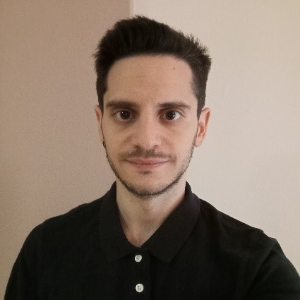
Andreas Christodoulou
Serres General Hospital, Greece
Anna Konopka
Macquarie University, Australia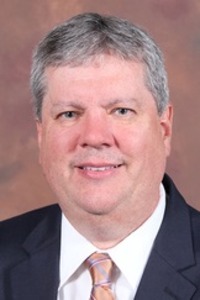
Barry Hammond
Department of General Dentistry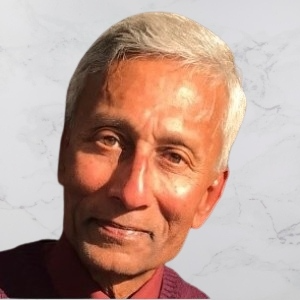
Ranjan Ramasamy
Id-Fish Technology Inc, Milpitas, United States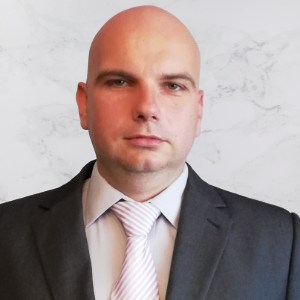
Krzysztof Skowron
Nicolaus Copernicus University in Torun, Poland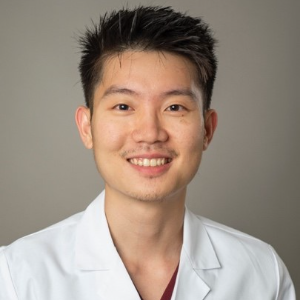
Aung Sitt Naing
Eastern Virginia Medical School, United States
Julissa Soto
Julissa Soto Latino Health Equity Consulting, United States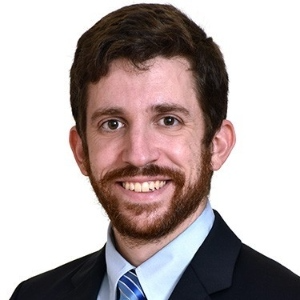
Eric Brownhill
Jacobi Medical Center, United States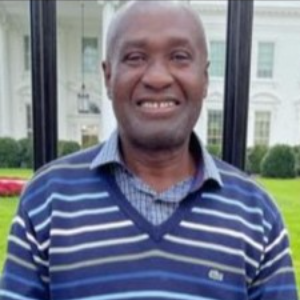
Jonathan Lambo
Avalon University School of Medicine, United States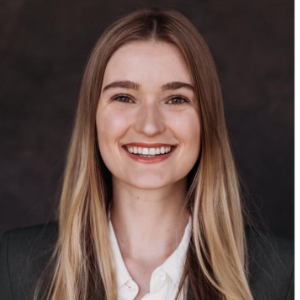
Kathleen Maguire
University of California, United States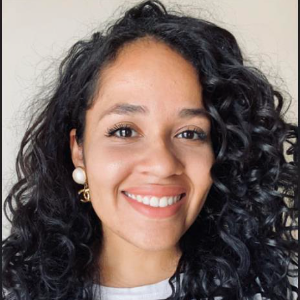
Elizabeth Yvonne Flores
Boston University School of Medicine, United States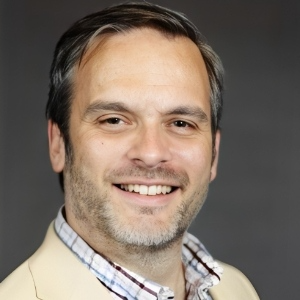
David Stiles
Recursion Pharmaceuticals, United States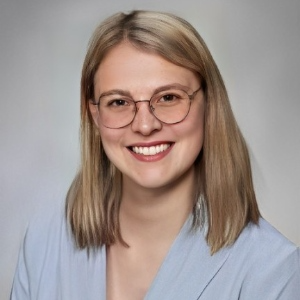
Franciela Golden
Mayo Clinic Jacksonville, United States
Yuhang Liu
Moderna Services, Inc., United States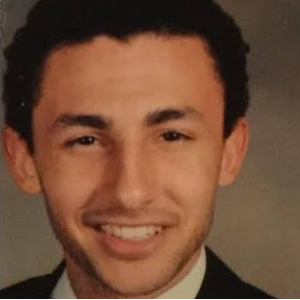
Aaron Briggs
University of California San Diego, United States
Maria Aguilar Amaya
Arizona State University, United States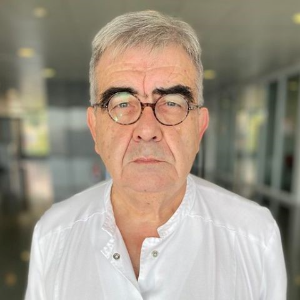
Pere Domingo Pedrol
Hospital de la Santa Creu i Sant Pau, Spain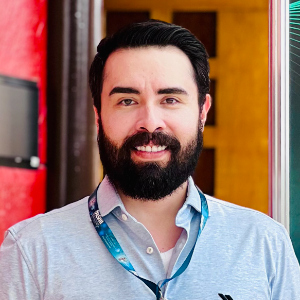
Luis Felipe Vargas Garcia
Hospital Christus Muguerza Alta Especialidad, MexicoConference Schedule
Registration
Opening Ceremony and Introduction
Keynote Session I
Refreshment Break
Keynote Session II
Lunch
Break Out Session I
Refreshment Break
Break Out Session II
Keynote Session III
Refreshment Break
Break Out Session III
Lunch
Poster Presentations
Refreshment Break
Break Out Session IV
Keynote Session IV
Refreshment Break
Break Out Session V
Lunch
Break Out Session VI
End Note Session and Closing Ceremony
Testimonials

It was a great experience and I got to learn a lot from the other presentations and lectures held as well. I look forward to participating in future conferences as well.
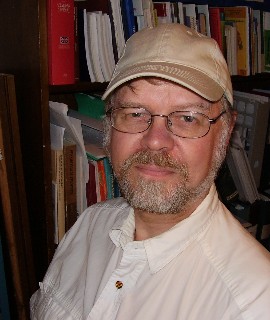
Thank you for organizing the meeting. Everything went smoothly for me.

Thank you and congratulations for so interesting Conference.
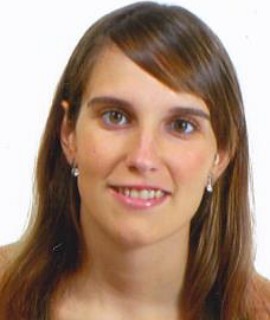
I would like to congratulate you and your mates for the good job that all of you did to schedule all the presentations. I felt that all the presentations were very interesting and of high quality. I hope that me or researchers from my team will be able to participate in future editions.

This Conference is a very fantastic event with very high quality speakers from all over the world.
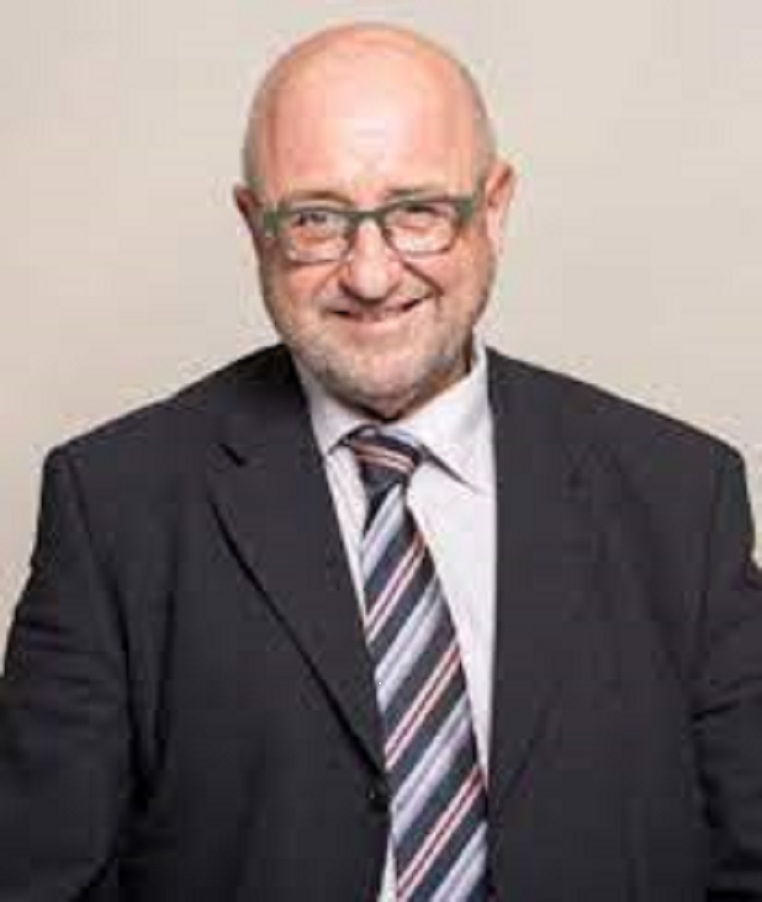
Neurology Virtual event was an interesting event. Thanks for the opportunity to participate.

This Conference is a Spectacular conference, interaction between speakers has been very enlightening for me I will attend the future conferences.

One of the most interesting conference, having a huge number of presenters.
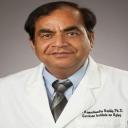
It is a great pleasure and honor to attend This Conference, the event has a good collection of top researchers around the globe.
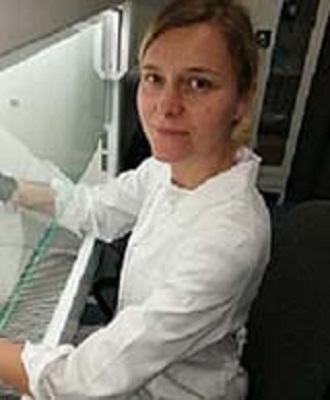
I would like to congratulate you on organizing a very interesting conference.


